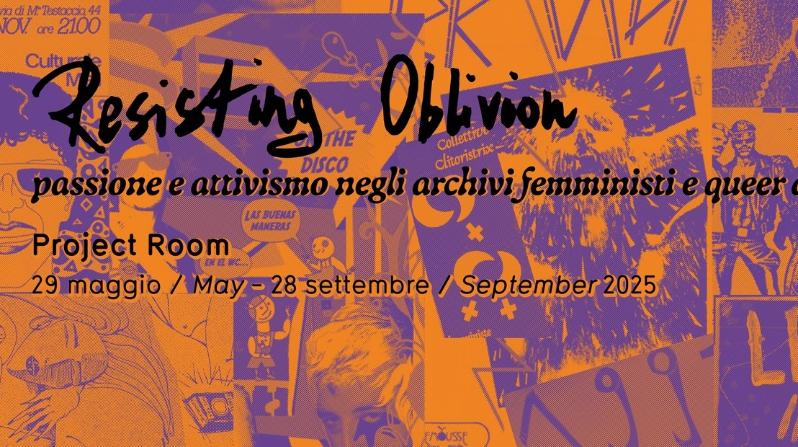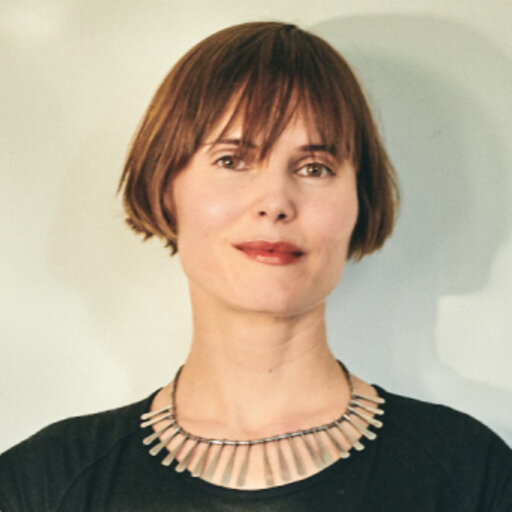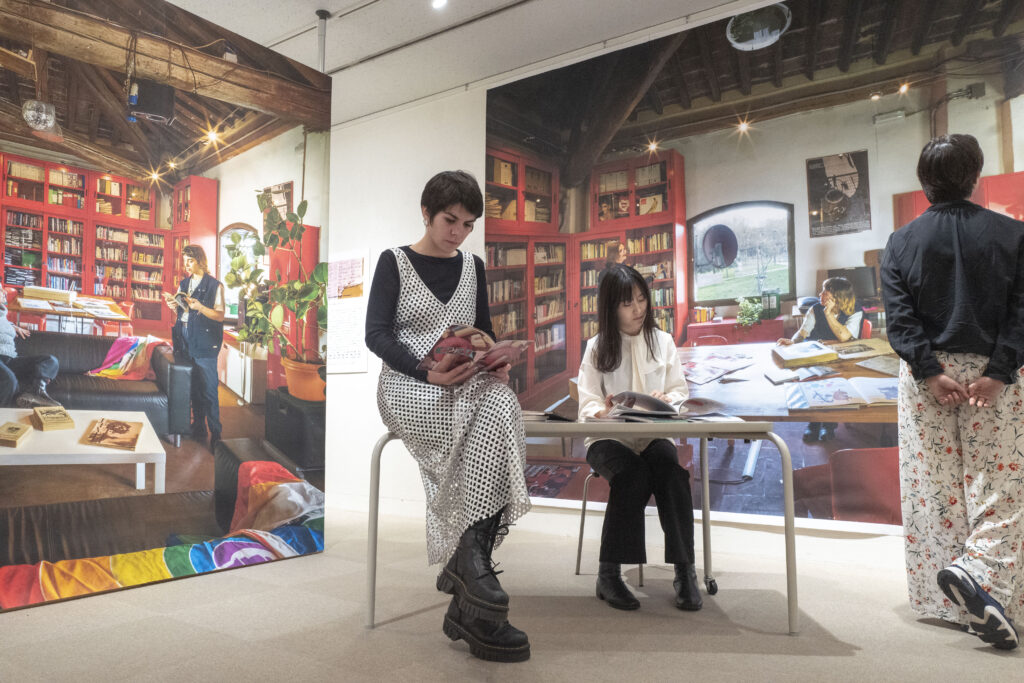Resisting oblivion is a project that explores the historical and collective dimension of transfeminist and queer activism in the area of Bologna using the archives, how did you get to interface with the institutions and associations of Bologna that look after and work with these archives?
So I studied social movements in Japan, the students movement, women liberation movement afterward and also the environmental movement as my recent focus. So the question of where social movements put their material is very important in Japan and there are these very small archives that really struggle to be opened to the public, they struggle to survive. Also activist movements put their material in state archives but there’s always the risk of being marginalized or buried.
When i came here in Bologna a friend of mine introduced me to Biblioteca delle Donne and i found it a lovely space and then through Biblioteca delle Donne i found out also the Archivio di storia delle donne di Bologna, and then through it i found out about Cassero and that also Cassero had an archive. I was here in Bologna learning italian and thinking to do some comparative work about social movements and activism between Italy and Japan but not sure about what. In the meantime i got so interested in these archives. Cassero introduced me to Mit, and Luki Massa, and Outtakes and for me what made these archives so interesting was first of all that they were able to maintain autonomy, and at the same time that they were also able to get support from the city. That felt especially important to me, because the support made it possible to preserve the collection over time and to make it accessible to the public.
When collections remain closed, it becomes difficult not only for researchers to carry out their work, but also for younger generations to engage in generational transfer — to understand that feminist and queer movements already existed in the past. Moreover I saw the way these archives operate and also the way they are active like Cassero that has offices that are working with the community whereas in Japan a lot of the activism archives are runned by older generations and there’s not necessarily a generational transfer.
The curatorial practices of these last years focus on the use of archives, in particular on the role of archives as a means of transmission of collective memory. What was your approach towards an archive of such importance as the Flavia Madaschi archive? Did you have trouble working with an archive that presents such a large volume of documents?
Well, while my name is listed as the curator of this exhibition, I don’t fully see myself as such.
Much like the archive project I worked on in Japan, this exhibition was part of an attempt to introduce these archival realities to a Japanese audience — as a form of inspiration for what might one day be possible there, even though the context is quite different.
In approaching the vast history and the incredible range of materials, I relied heavily on the people who work with the archives here. Especially for this exhibition, before even beginning to select what to present, I had to depend on their knowledge — to understand the history and to learn which materials hold significance for the community. In that sense, I would say this has truly been a collective process.
In your research and projects you often work with Japanese social archives, did you find any differences or similarities with the archives of the associations involved in the exhibition?
What I noticed with the archivio di storia delle donne, actually with all of them, was this very strong archival urge. In Social movements archives you often finds activists very focused on the present and the future, so when people make a flyer for an event it has a purpose which is to gather people or spread awareness about something but these flyers are very disposable, that’s what’s usually called ephemera, because you go to an event and then you throw it away, but i found that there needs to be somebody who points out the importance of these as documents.
For example, there’s a coal mining archive i worked with in Kyushu, a southern island of Japan in which there was a huge strike in 1960 and one librarian decided to collect all of the flyers the workers were making during the strike and they were ephemera, but i was unusual for the time.
The groups in Bologna, and maybe because of the proximity to the university or the emphasis on the the heritage, showed this archival impulse almost at the beginning of the moment in which this associations were created. That to me is very interesting because often it’s a very retrospective thing when social movements have a moment to reflect on their larger history or legacy but that’s not to be taken for granted
Leaving aside the creative aspect of the exhibition, let’s talk now about the practical aspect which is visible in its set up and in the place in which the exhibition takes place. What kind of setup was chosen to display the archives which are connected to the history of the Italian transfeminist movement?
Originally we had the idea to think about things in terms of clusters because within archives you have many materials that overlap, so when you put them together you don’t see one linear narrative or history, but you see coalition and cooperation which is really interesting.
So we thought about concentrating on key figures or key characters which is always difficult because of the emphasis on individuality. On the other hand people also really like personal stories and we succeeded in conveying to younger generations the names and the faces of the people who were involved. We initially thought about organizing the exhibition around thematic clusters and key figures, and eventually decided on a loose chronological layout within the space. But we didn’t want it to be just a celebration of past glories. It was also important to emphasize that the archive is part of an ongoing process — one that includes many stories that have not yet been documented, reveals gaps in the existing records, and reflects the tensions within the community that the archive itself should aim to preserve.
We also had this card catalogue because I also wanted people to see historical material as a chance for them to reflect on their own lives as part of history and their own individual personal story as part of a larger story. We included a card case containing cards that introduce materials from the archives themselves. Alongside these, we also displayed cards from the Tokyo exhibition, where visitors had written what they would leave behind for future historians — and these contributions have now become part of the archive. In addition, we provided blank cards for visitors to fill out, inviting them to add their own part of the story. At the center of the space, a circular table serves as a point of reflection reorienting the narrative toward the future and toward the idea of archives still to come.

Given the fact that many contemporary art museums are beginning to show interest to queer and feminist archives, what do you think could be the role of contemporary art museums in relation to feminist and queer archives?
Well, I will say I’m an historian who usually reads texts and writes texts, so I’m kind of trained to have a textual bias. In working on this, what has been very interesting to me was seeing how archives like these don’t just preserve documents but also ephemera like posters and objects and how we also have a visual language and aesthetic. We see these posters that are very amateur but also very sophisticated at the same time, and it is interesting to see this visual language preserved.
I guess i didn’t think about that being an historian and having a documentary bias, so to me is quite interesting seeing how the museum space allows us to see this aesthetic




Perseguitaci